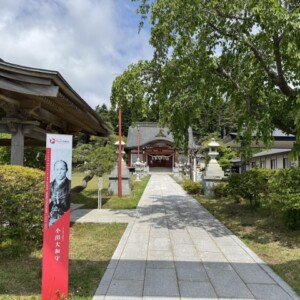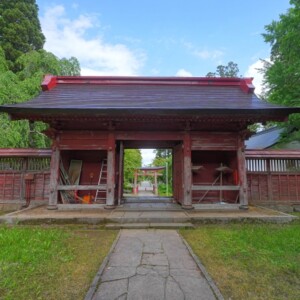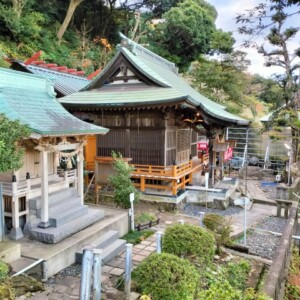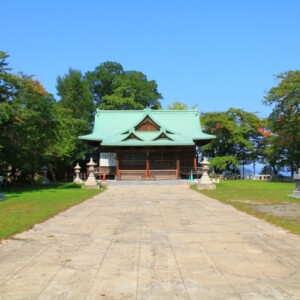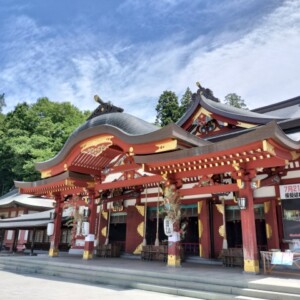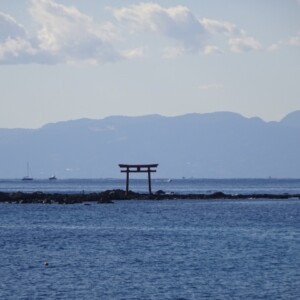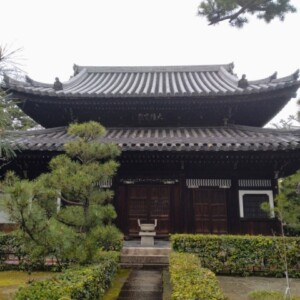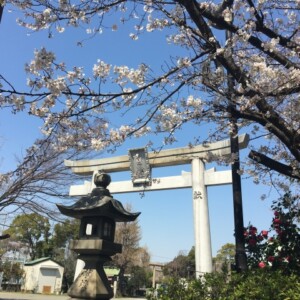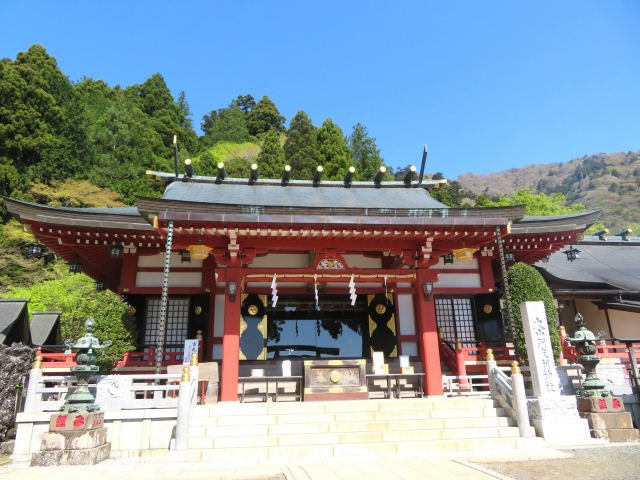
Oyama Aburi Shrine|A complete guide to the 2,200-year history and blessings of the gods at the sacred mountain that protects the Kanto region
Daisen-Aburi Shrine, located on Mt. Daisen, a sacred mountain in Isehara City, Kanagawa Prefecture, is a sacred place of protection for the Kanto region with a long history of over 2,200 years. Since ancient times, the shrine has been revered as an object of mountain worship and has attracted the faith of many people throughout the ages, from the warrior families of Minamoto no Yoritomo and the Tokugawa family to the common people of Edo (present-day Tokyo). The spectacular view from the head shrine at the summit of the 1252-meter-high mountain and from the lower shrine on the hillside has received two stars in the Michelin Green Guide Japon, attracting attention from both inside and outside Japan.
Outline and Basic Information on Daisen Aburi Shrine
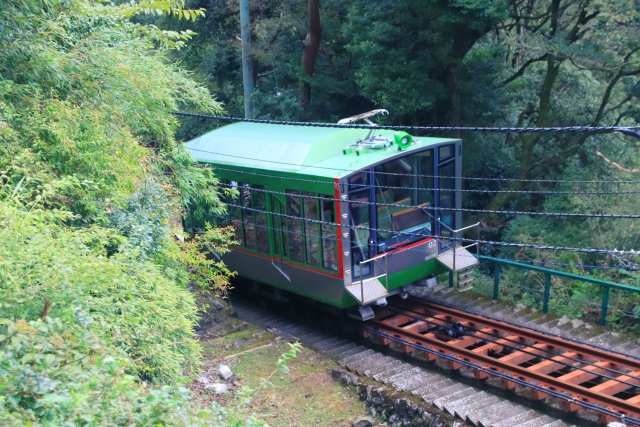
Oyama Aburi Shrine is an ancient shrine located in Oyama, Isehara City, Kanagawa Prefecture, and has a prestigious history as a shiki-nai-sha in Sagamiguni Province, listed in the Engishiki Shinmei-cho of 927 (the fifth year of the Enki era). Currently designated as a separate shrine by the Jinja Honcho, it is widely worshipped as the sacred mountain that protects the Kanto region.
Mt. Daisen is also called Afuriyama (meaning “rainfall mountain”), and was also called Daifukuyama (meaning “great fortune mountain”) in ancient times. The head shrine, Okusha (inner shrine), and Mae-sha (front shrine) are located on the mountain, and Shimo-sha (lower shrine), which attracts many worshippers, is built halfway up the mountain. The main shrine is located at the summit of the mountain at an elevation of 1252 meters, and the lower shrine is built on the hillside at an elevation of 700 meters, accessible by cable car.
History and Origin
Daisen-Aburi Shrine was founded approximately 2,200 years ago in the reign of Emperor Sojin. Since ancient times, Mt. Daisen has been revered as the root of mountain worship, and Jomon pottery has been excavated.
In 752, the great priest Ryoben built Amezan Daisenji Temple as a shrine temple, and enshrined Fudo Myoo as its principal deity. After this, the age of Shintoism and Buddhism began, and Daisen came to be known as Ishison Daigongen. The name “Amezureyama” (Mt. Amezure) was given to the mountain because of the sacred tree on the top of the mountain that constantly drips raindrops, and it is still known by the name “Amezuregi” today.
From the Middle Ages onward, Shugendo (mountain asceticism) based at Daisenji Temple flourished, and the temple was highly revered by samurai families such as Minamoto no Yoritomo, the Hojo clan, and the Tokugawa clan. In the Edo period (1603-1867), “Daisen Pilgrimage” became very popular among the common people, and many worshippers came from all over the Kanto region to visit the temple. This culture of pilgrimage to Mt. Daisen is now recognized as a Japanese Heritage.
In the early Meiji period (1868-1912), the Shinto and Buddhism Separation Order was passed, and Daisenji Temple was moved to its current location, and the shrine was renamed “Daisen Aburi Shrine”.
Deities and Benefits
Three deities are enshrined at Oyama Aburi Shrine. The main deity is Oyamatsumi no Okami, the deity of the mountains and the center of mountain worship. The Okusha (back shrine) enshrines the deity Oikazuchi-kami, and the Mae-sha (front shrine) enshrines the deity Takaokami-kami, both of whom have also been referred to as “big tengu” and “little tengu” since ancient times.
The Toriiwakusubune no Kami, the guardian deity of the sea people, is also enshrined at the shrine, and is believed to be the guardian of both the mountains and the sea.
The shrine is also known for its many benefits, such as the fulfillment of one’s wishes, prosperity of business, prosperity of the company, safety in agriculture and industry, safety at sea, and prayers for a good catch of fish. As the name of the mountain implies, it has also long been worshipped as a god of rain.
Highlights and Features of Daisen Aburi Shrine
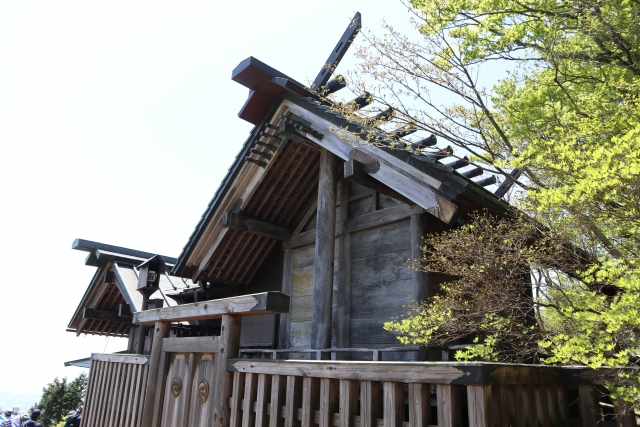
The main attraction of the Daisen-Aburi Shrine is the majestic group of shrine pavilions scattered around the sacred mountain Daisen and the magnificent view of the Kanto Plain from there. The head shrine and the lower shrine each have their own unique charms and offer a wide variety of views throughout the four seasons.
The majestic pavilions of the Head Shrine and Shimo-sha Shrine
The Head Office, located at the summit of Mt. Daisen at an elevation of 1252 meters, is the center of the Shinto sanctuary dedicated to the deity Daisenzi-no-mikoto. The summit of the mountain is reached by a 90-minute hike from the lower shrine, where a majestic shrine pavilion stands in the air filled with a sacred atmosphere. In front of the main shrine is a large beech tree called “rainfall tree,” which is known as a mysterious sacred tree that holds drops of water even on sunny days.
On the other hand, the lower shrine, which attracts many worshippers, is located on a hillside at an altitude of about 700 meters and has a large hall of worship surrounded by a dense grove of trees. Within the precincts of the shrine are Shishisan, Tenmangu Shrine, Sengen Shrine, and other auxiliary shrines, and there is also a gate leading up to the summit of the mountain. The stone steps leading down to the hall of worship are lined with a pavilion and a teahouse, providing a place for worshippers to relax.
In the basement of the lower shrine, there is a water fountain that provides visitors with pure water from the famous Daisen water. There is also a corner displaying valuable artifacts from the shrine, allowing visitors to experience the history and culture of Daisen.
A spectacular view that has earned two Michelin stars
The view from Daisen Aburi Shrine is internationally acclaimed for its spectacular scenery, which was awarded two stars by the Michelin Green Guide Japon in 2015. From the lower shrine, visitors can enjoy a panoramic view of the Kanto Plain, as well as Sagami Bay, Enoshima Island, Boso Peninsula, and Izu Oshima Island.
On a particularly clear day, you can even see the skyscrapers of Shinjuku, creating a magnificent view that is hard to believe that you are in the Tokyo metropolitan area. The view from the top of Mt. Daisen has been selected as one of the “Top 50 Scenic Spots in Kanagawa,” offering a 360-degree panoramic view.
At dusk, the sunset over the Kanto Plain is beautiful, and the night view is also exceptional. During the “Picture Touro Festival” and when the autumn leaves are illuminated, the cable car operates at night, offering a fantastic view that differs from that of the daytime.
Natural beauty of the four seasons
Oyama Aburi Shrine is blessed with beautiful nature throughout the four seasons. In spring, the Oyama cherry trees, more than 400 years old, bloom beautifully, delighting the eyes of visitors. There is a mountain path behind the shrine office that leads visitors to all four ancient trees.
In summer, the entire area is covered with fresh greenery, and the trail is lush with primeval forests of beech and fir. Walking in the midst of Daisen’s abundant nature, visitors can enjoy forest bathing in a way that cannot be experienced in urban areas.
In autumn, the entire mountain is decorated with beautiful autumn leaves in gradations of red, orange, and yellow. The autumn foliage around the Shimo-sha Shrine is particularly spectacular and attracts many tourists every year. During the fall foliage season, the area is illuminated, allowing visitors to enjoy the fantastic night view of the autumn foliage.
In winter, the snow-covered Mt. Daisen is solemn and beautiful, and the experience of visiting the shrine in the clear air is exceptional. The shrine pavilions standing in the snowy landscape create an even more sacred atmosphere.
Important Cultural Properties and Shrine Treasures
Many valuable cultural assets are preserved at Oyama Aburi Shrine. The Oyama Fire Festival Takigi Noh is a Shinto ritual performance that has been passed down in Oyama for 300 years and is designated as an important cultural asset by Isehara City. The ethereal world of a shrine maiden in hakama offering the sacred fire and a bonfire lit in silence is a beautiful scene set against the natural backdrop of Daisen.
The Yamatomai and Miko (shrine maiden) dances, which were handed down from the family of the Kasuga Grand Shrine in Nara in the early Meiji period, have also been handed down as a valuable cultural heritage, and are dedicated at the Autumn Grand Festival and other festivals. The Noh stage is dedicated to Noh and Kyogen, and is also a treasure house of traditional performing arts.
The custom of “Noutachi,” which originated with Minamoto no Yoritomo’s delivery of a sword to the shrine, continues to this day as a rite for the delivery of a wooden sword. These traditions are a valuable heritage of the region as a unique culture inherited from the pilgrimages to Daisen in the Edo period.
Guide to Pilgrimage
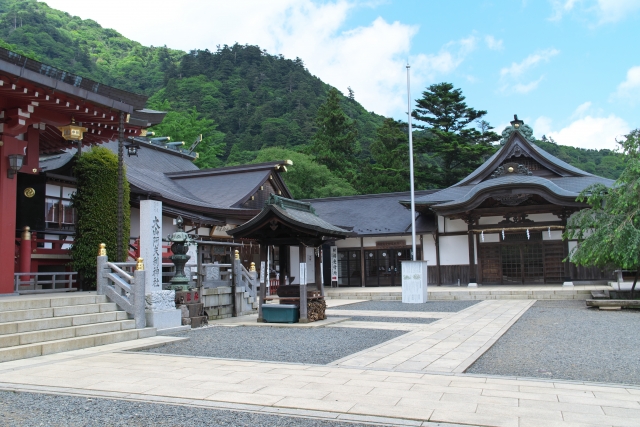
The most common way to visit Oyama Aburi Shrine is to take the cable car to the lower shrine. As a sacred place of mountain worship, please visit the shrine with proper manners and etiquette.
Worship Etiquette and Manners
Worship at the Oyama Aburi Shrine begins with purifying the body and mind at the hand-watering basin in the Shimo-sha Shrine. After purifying the left hand and then the right hand, rinse the mouth and purify the body before passing through the torii (gate). When praying at the shrine, follow the etiquette of “niha niha, clap your hands and pray once” and offer your prayers with all your heart.
As a sacred place of mountain worship, it is important to be mindful of the natural environment. Garbage must be taken out of the site, and the collection of plants and animals is strictly prohibited. When on the trail, please remember to be considerate of other worshippers and climbers, and try to maintain a quiet mountain environment.
If you wish to climb to the head office, you must have solid climbing gear. The trail from the lower shrine to the head office takes about 90 minutes, so be prepared with hiking shoes, rain gear, and a drink before heading up. Weather conditions can change suddenly, so it is important to check the weather in advance.
Annual and Seasonal Events
Various Shinto rituals are held throughout the year at Daisen-Aburi Shrine. On January 7 of each year, the Tsutsugushi (rice porridge) ritual is held at the lower shrine, and has been a familiar traditional event since the Edo period (1603-1868). In accordance with the ancient ritual, rice gruel cooked over firewood is scooped into small bamboo tubes, and the number of grains of rice that remain intact is used to divine the success of 18 different crops.
The Autumn Grand Festival, held over three days from August 27, is a grand festival held by the entire district of Daisen. The festival opens with a heroic “oshogari,” a procession of portable shrines carried down the Otokozaka slope from the lower shrine of Aburi Shrine, and the procession of portable shrines continues through the night in each town. During this period, there are also dedications of Yamatomai and Miko (shrine maiden) dances, as well as Noh and Kyogen performances on the Noh stage.
In autumn, chrysanthemums grown with great care by the Isehara Akifutsu-kai are dedicated and beautifully displayed at the Shimo-sha Shrine. The Daisen Fire Festival Firelit Noh Play is also held in the fall, offering visitors the opportunity to enjoy the ethereal world of Noh.
During the summer “E-touro Festival”, the cable car operates at night, offering a mystical atmosphere different from that of the daytime. During the autumn foliage season, the cable car is also illuminated, allowing visitors to enjoy viewing the autumn foliage at night.
Red Seal and Good Luck Charm Information
Four types of red seals are available at Oyama Aburi Shrine. There are red seals for the summit, the lower shrine, the shrine office, and the Sengen shrine available at the lower shrine, each for 500 yen. Currently, only a written request is accepted. Since the shrine office is not open at the summit, visitors can obtain a red seal for the summit by informing the Shimo-sha that they have visited the summit of the mountain.
Various types of good luck charms and awards are available, including those for the fulfillment of one’s wishes, business prosperity, traffic safety, and academic success. Especially popular are amulets associated with pilgrimages to Mt.
Prayers for Shichi-Go-San (seven-five-three-three pilgrimages), Hatsu-no-Miya (first shrine visit), exorcism, safety, etc. are also available at any time. We recommend that you contact the shrine in advance for more details.
Access and usage information

Public transportation is the most convenient way to get to Oyama Aburi Shrine, which is generally accessible by bus and cable car from Isehara Station on the Odakyu Line.
Transportation Access
By public transportation, take the Kanagawa Chuo Kotsu Bus bound for “Daisen Cable” from platform 4 at the north exit of Isehara Station on the Odakyu Line. Buses run on both weekdays and weekends, and it takes about 30 minutes to reach the last stop, Daisen Cable Bus Stop.
From the bus stop to the cable car stop, walk for about 15 minutes along the approach called “Koma-sando. There are 362 steps on this approach, and tiles with designs of “Daisen Koma,” Daisen’s specialty, are placed at each landing. Along the approach, there are many souvenir stores, eateries, and workshops of Oyama Koma, which give visitors a sense of the atmosphere of a pilgrimage to Daisen in the Edo period.
From the Daisen Cable Station, take the Daisen Cable Car to the Aburi Shrine Station, which takes about 6 minutes. From the station to the Shimo-sha shrine is about a 2-minute walk.
If accessing by car, it is about 15 minutes from the Isehara-Oyama Interchange on the New Tomei Expressway. When using the Tomei Expressway, it takes about 30 minutes from the Atsugi Interchange.
Hours of Admission, Fees, and Parking Information
There is no fee to visit Daisen-Aburi Shrine, but a fee is required to use the cable car. The cable car operates from 9:00 to 16:30 on weekdays (Monday through Friday) and from 9:00 to 17:00 on weekends. However, the operating hours are subject to change depending on the season and weather conditions, so it is recommended to check in advance.
There are two parking lots operated by Isehara City. The first municipal parking lot is located approximately 600 meters below the Daisen Cable Bus Stop and can accommodate 84 regular vehicles and 6 large vehicles.
The second municipal parking lot is located just above the Daisen Cable Bus Stop and has parking space for 44 standard-sized vehicles and 6 motorcycles, with fees of 1,000 yen per day for standard-sized vehicles and 200 yen per day for motorcycles. Parking for medium-sized vehicles and larger, such as microbuses and sightseeing buses, is not allowed in Parking Lot No. 2.
There are several other privately operated parking lots available for approximately 1,000 yen per day. We recommend arriving early during periods when crowding is expected, such as during the fall foliage season. If the parking lot is full, you can use a nearby private parking lot.
The Aburi No. 1 parking lot operated by the shrine was newly established in 2022 and is available for standard-sized vehicles only.
The “Saryo Ishizon” is located next to the Shimo-sha Shrine, where visitors can enjoy a cup of coffee brewed with the shrine’s sacred water while taking in the spectacular view. It is a precious space where visitors can relax and enjoy the eternal nature of Daisen and the charm of the shrine.
Address: 355 Daisen, Isehara-shi, Kanagawa 259-1107
Reference site
Official website of Oyama Aburi Shrine: https://www.afuri.or.jp/
Isehara City Tourism Association Official Website: https://isehara-kanko.com/history/afurijinja/
Isehara City Official Website: https://www.city.isehara.kanagawa.jp/kankou_guide/docs/2014100700027/
Kanagawa Prefectural Shinto Shrine Office: https://www.kanagawa-jinja.or.jp/shrine/1209278-000/
Daisen Kanko Dentetsu (Daisen Cable Car): https: //www.ooyama-cable.co.jp/access/



